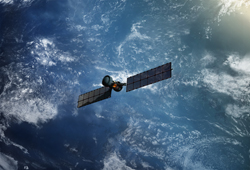Small satellites reaching for the stars
European scientists with the MICROTHRUST project have designed a tiny motor that runs on an ionic liquid, specifically EMI-BF4.This compound is composed of electrically charged molecules called ions and is liquid at room temperature. The ions are extracted from the liquid and then ejected by means of an electric field to generate thrust. This is the principle behind the MICROTHRUST ionic motor: fuel is not burned, it is expelled. In the motor developed, ions are emitted from an array of tiny silicon nozzles — more than 1 000 per square centimetre. The fuel is first guided from a reservoir to the extremity of the micro-nozzles, where the ions are accelerated and finally emitted out the back of the satellite. The ion ejection system requires high electrical voltage, and the available energy aboard a nanosatellite is limited to a few small solar cells (or about 4 W of power). This difficulty was overcome with the miniaturisation of the system. The tiny motor was not built to blast satellites into orbit; instead, it was designed to help spacecraft manoeuvre once they are in space — something that previously required bulky expensive engines. The new, ultra-compact motor will allow satellites to shift direction while orbiting at 40 000 km/h. MICROTHRUST'S first prototype of the motor has already made its way out of the laboratories and may be tested under real world conditions with the CleanSpace One mission — a nanosatellite under development to clean up space. Nanosatellites are much cheaper than their bigger counterparts, but currently lack an effective propulsion system and are thus stuck in their orbit around Earth. Project outcomes could usher in a new era of low-cost space exploration.
Keywords
Satellite, nanosatellite, propulsion, ionic liquid, space exploration, spacecraft manoeuvre



